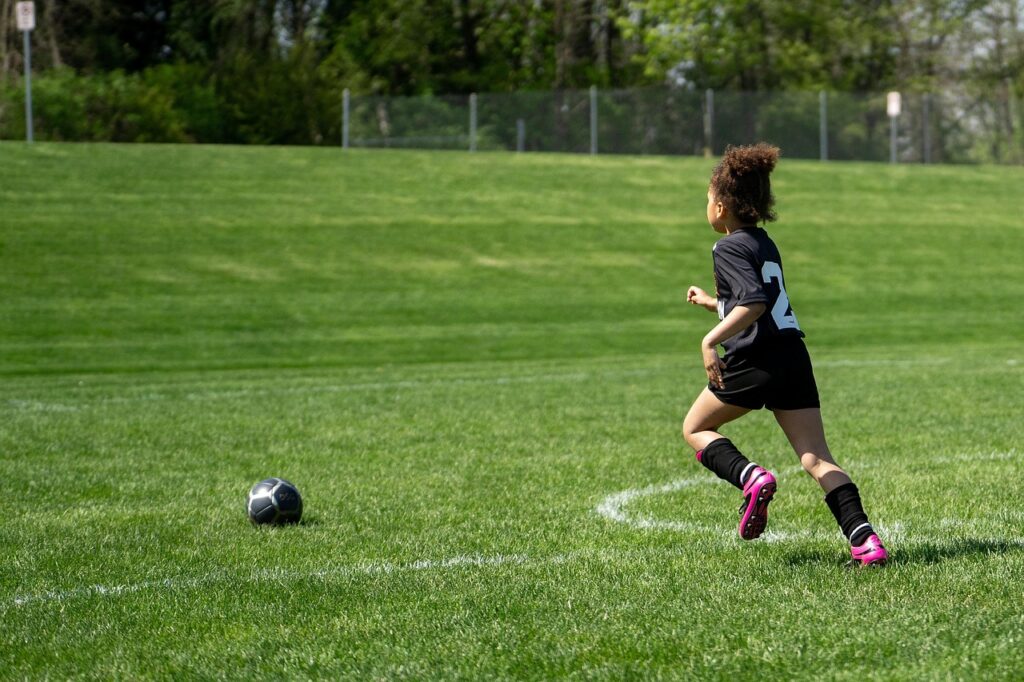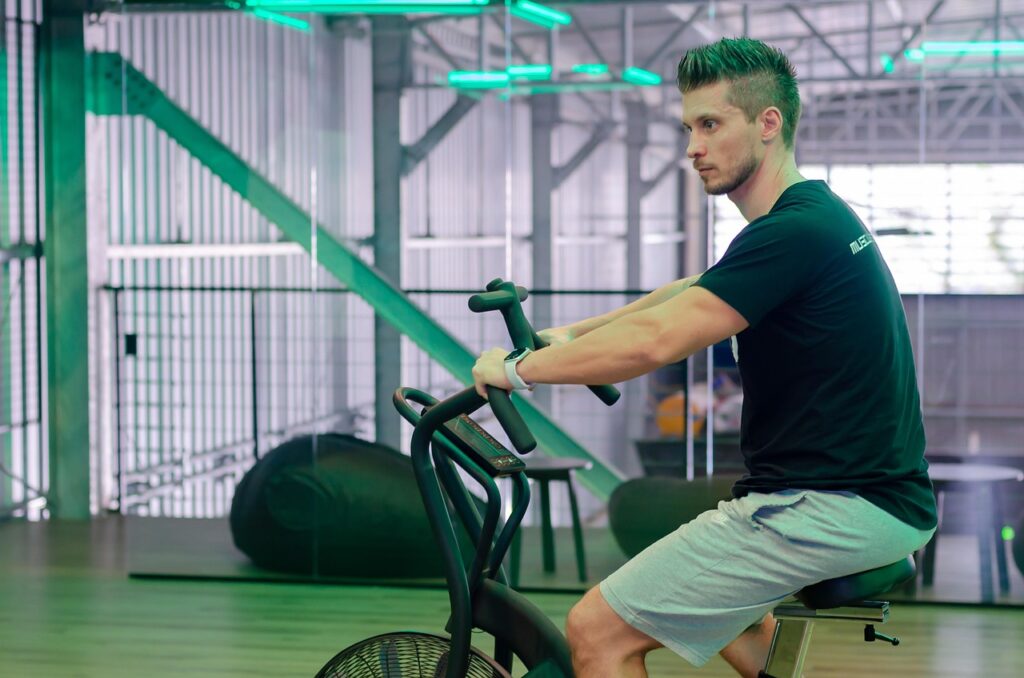
Fitness plateaus are an inevitable, and frankly, a crucial part of every dedicated fitness journey. Whether your goal is to pack on muscle, shed stubborn fat, boost your strength, or achieve new endurance milestones, you will inevitably hit a wall where progress seems to grind to a halt. This isn’t a sign of failure; instead, it’s your body’s remarkably efficient way of signaling that it has adapted to your current training stimulus and is now demanding new challenges to continue its evolution.
While encountering a progress pause can certainly be frustrating, perhaps even leading to a dip in motivation, it’s vital to recognize that these periods are entirely normal. They serve as powerful opportunities for self-assessment, adjustment, and ultimately, a springboard to greater achievements. Your body learns, adapts, and grows; therefore, your training must also evolve to keep pace with its incredible capacity for change.
Our comprehensive guide today is designed to arm you with the science-backed understanding of why these plateaus occur and, more importantly, to provide you with a potent arsenal of actionable strategies to reignite your progress. By systematically dissecting the physiological and psychological mechanisms behind plateaus and implementing these targeted solutions, you can transform these temporary roadblocks into valuable stepping stones toward unlocking higher levels of fitness. Let’s dive in and transform your next plateau into your next breakthrough.
1. **Implement Strategic Periodization**Strategic periodization stands as a cornerstone method for preventing adaptation stagnation and consistently driving progress. This isn’t about random variation; it’s a systematic approach to varying training variables—such as volume, intensity, and specific focus—over planned cycles. By introducing these calculated fluctuations, you continually challenge your body in new ways, compelling it to adapt without succumbing to the diminishing returns of a static routine. It manages fatigue and targets different physiological systems in a coordinated, intelligent manner.
For those focused on strength gains, periodization might involve transitioning through hypertrophy blocks, where you’re lifting moderate weights for 8-12 repetitions to build muscle mass, followed by strength blocks, where the weight increases, and reps drop to 4-6. You might even incorporate peaking blocks with near-maximal weights for 1-3 repetitions to maximize neural adaptations. Undulating periodization takes this a step further, allowing you to vary rep ranges within a single week, keeping your body constantly guessing and adapting. Crucially, deload weeks should be scheduled every 4-8 weeks to prevent accumulated fatigue from becoming a performance inhibitor.
Endurance athletes also reap significant benefits from periodization. Your training might alternate between base building phases, characterized by higher volume and lower intensity, and threshold training, which involves moderate volume and intensity to improve lactate tolerance. Peak phases then focus on lower volume and higher intensity to fine-tune race readiness. Structuring your training in 3-4 week mesocycles, with increasing load followed by dedicated recovery weeks, ensures continuous adaptation. Furthermore, integrating distinct blocks that focus on different energy systems—such as aerobic or anaerobic—can provide a comprehensive stimulus.
Research solidifies the efficacy of this approach: A study published in the Journal of Strength and Conditioning Research found that individuals following periodized training programs achieved significantly greater strength gains—up to 25% more—compared to those on non-periodized routines over a 12-week period. This isn’t just theory; it’s a proven method to prevent your body from becoming too comfortable. Consider incorporating cross-training modalities like rowing machines during endurance periodization phases; this helps develop complementary muscle groups and reduces joint impact, offering a fresh, yet relevant, challenge.

2. **Manipulate Training Variables**When progress stalls, a powerful and direct intervention involves systematically manipulating your training variables. The FITT principle—Frequency, Intensity, Time, and Type—provides an excellent framework for doing this, allowing you to create novel adaptive stimuli without completely overhauling your entire program. The beauty of this strategy lies in its precision; by altering just one or two variables, you can elicit a profound response from your body, preventing it from fully adapting to any single training approach.
Consider the lifter stuck on a hypertrophy plateau. You might adjust training frequency for specific muscle groups, either increasing it to stimulate protein synthesis more often or decreasing it to allow for more recovery from highly intense sessions. Intensity can be manipulated by changing rep ranges, incorporating demanding techniques like drop sets, or utilizing rest-pause training to extend sets beyond normal failure points. Adjusting the total training volume or modifying the rest periods between sets also falls under the ‘Time’ variable, impacting both the metabolic stress and recovery capacity. Finally, varying the ‘Type’ of exercise by introducing new movements that target the same muscles from different angles can provide a fresh stimulus.
For those facing a weight loss plateau, manipulating these variables is equally effective. Increasing frequency could mean adding an extra short, high-intensity session weekly to boost caloric expenditure and metabolic rate. Intensity can be elevated by incorporating high-intensity interval training (HIIT) or metabolic resistance training, which creates an ‘afterburn’ effect. Gradually extending the duration of your moderate-intensity cardio sessions addresses the ‘Time’ variable. Lastly, introducing unfamiliar activities that challenge different movement patterns—such as hiking, cycling, or swimming—can shake up your routine and demand new adaptations.
Scientific backing for this approach is robust. Research published in the European Journal of Applied Physiology demonstrated that merely altering one training variable—specifically, reducing rest periods while maintaining the same load—was sufficient to overcome plateaus in trained individuals, leading to renewed muscle growth and performance improvements. This underscores that you don’t always need drastic changes; sometimes, a precise tweak is all it takes. For example, introduce different cardio equipment like exercise bikes to challenge your cardiovascular system in new ways while maintaining consistent intensity.
Read more about: Some Analytical Insights into Ukraine’s Evolving Air Strategy: Precision Strikes, Tactical Revelations, and Geopolitical Shifts

3. **Incorporate Advanced Training Techniques**To truly push past a stubborn plateau, you often need to temporarily venture beyond your normal fatigue barriers. This is where advanced training techniques come into play, specifically designed to recruit additional muscle fibers and trigger more robust, deeper adaptation responses. These methods are not for everyday use, but when deployed strategically, they can be potent catalysts for breaking through stagnation. They significantly increase recovery demands, so judicious application is key.
In strength training, several techniques can profoundly impact your progress. Drop sets involve performing a set to failure, then immediately reducing the weight by 20-30% and continuing to failure again, intensely fatiguing muscle fibers. Rest-pause training allows you to reach failure, rest for 15-20 seconds, and then perform additional repetitions, squeezing out more work from fatigued muscles. Mechanical drop sets offer a smart progression, moving from harder to easier exercise variations within a set to extend the muscular challenge. Eccentric emphasis, where you focus on a 3-5 second lowering phase with heavier-than-normal weights, can lead to greater muscle damage and subsequent growth. Pre-exhaustion, isolating a muscle group before compound movements, ensures the target muscle is fatigued and truly challenged during the main lift.
Endurance athletes also have an arsenal of advanced techniques. Fartlek training, or “speed play,” incorporates unstructured bursts of varied intensities into a steady-state session, enhancing both speed and endurance. Reverse periodization begins with high-intensity, lower-volume work, progressively shifting towards higher volume and lower intensity. Over-under intervals alternate between periods slightly above and below your lactate threshold, improving your body’s ability to clear lactic acid. The cardiac output method focuses on extended low-intensity sessions to enhance the heart’s stroke volume, while sprint-float-sprint intervals alternate between maximal effort and “floating” recovery to improve high-end speed and recovery capacity.
The science firmly supports these methods. A study published in the Journal of Strength and Conditioning Research revealed that incorporating drop sets increased muscle activation by an impressive 39% compared to traditional straight sets. This heightened activation can effectively recruit previously untapped muscle fibers, providing a powerful stimulus for growth and strength. For those needing joint-friendly options, consider using recumbent bikes for seated sprint intervals; these allow for high-intensity effort that protects the lower back, ensuring you can push hard without unnecessary strain.
Read more about: The $15.8 Million Presidential Custom Fleet: A Deep Dive into High-Security Transportation and Campaign Operations
4. **Focus on Recovery Optimization**It’s a common misconception that plateaus always stem from insufficient training stimulus. In reality, a significant number of progress stalls occur not because you aren’t training hard enough, but because you’re simply not recovering adequately between sessions. Without optimal recovery, your body cannot effectively repair, rebuild, and adapt to the stresses you impose upon it. This makes recovery optimization a non-negotiable component of breaking through any fitness plateau. When recovery is compromised, even the most perfectly designed training program will fail to produce desired results.
Sleep enhancement is paramount. Aim for a consistent 7-9 hours of quality sleep nightly, as this is when your body undertakes critical repair processes, hormone regulation, and neural recovery. Establishing a consistent sleep/wake schedule, creating an optimal sleep environment (cool, dark, and quiet), and limiting screen exposure before bed are all vital steps. For a deeper understanding of your sleep patterns, consider tracking metrics like sleep duration, quality, and disturbances. Remember, sleep is deeply anabolic, and poor sleep reduces testosterone while increasing cortisol, both detrimental to your gains.
Effective stress management is equally critical. Chronic stress, whether from training or daily life, can elevate cortisol levels and impede recovery. Implement daily mindfulness practices, schedule deliberate relaxation periods, and critically monitor the balance between your training intensity and overall life stress. Adjusting workout intensity during periods of high mental or emotional stress can be a game-changer. Tracking heart rate variability (HRV) can provide an objective indicator of your body’s readiness to train and overall recovery status.
Beyond sleep and stress, incorporating specific recovery modalities can accelerate your bounce-back. Contrast water therapy, which alternates between hot and cold exposure, can improve circulation and reduce inflammation. Foam rolling and self-myofascial release techniques help alleviate muscle tightness and improve tissue quality. Active recovery sessions, performed at a low intensity (30-40% of max effort), enhance blood flow to recovering tissues without adding significant fatigue. Regular mobility work, focusing on your most-used movement patterns, and professional massage therapy or percussion massage devices can also significantly aid in preparing your body for its next challenge. For active recovery, elliptical machines offer full-body movement with minimal impact stress, perfectly enhancing circulation without adding undue strain.
Read more about: Inside Tom Brady’s Strategic Play: Why the NFL Legend is Backing AI-Powered Health Technology Through Aescape

5. **Revisit Nutrition Fundamentals**Often, the solution to a persistent fitness plateau doesn’t lie solely in your training program, but rather in a careful re-evaluation of your nutritional intake. Inadequate calories, insufficient protein, or a lack of crucial micronutrients can severely hinder your body’s ability to repair, grow, and adapt. Nutritional factors frequently underpin stalled progress, especially as your body composition changes and its metabolic needs evolve. Periodic reassessment and strategic adjustments are essential to maintain the optimal environment for continued progress without resorting to extreme or unsustainable dietary practices.
For those experiencing a muscle building plateau, a thorough caloric assessment is the first step. Ensure you are maintaining a consistent caloric surplus of 300-500 calories per day to provide the necessary energy for growth. Protein optimization is paramount: aim to consume 1.6-2.2 grams of protein per kilogram of bodyweight daily, as protein is the building block of muscle. Nutrient timing, while often debated, can be beneficial; distributing your protein intake evenly across 4-5 meals throughout the day helps maximize muscle protein synthesis. Ensure carbohydrate adequacy, targeting 4-7 grams per kilogram of bodyweight, to replenish glycogen stores. Finally, pay attention to micronutrients, emphasizing zinc, magnesium, and vitamin D, which play crucial roles in hormonal function and recovery.
If your fat loss progress has stalled, a different nutritional strategy is required. Begin by recalculating your caloric needs, adjusting them based on your new, lighter body weight. A highly effective strategy is to implement “diet breaks,” which involve 1-2 week periods at maintenance calories every few weeks. This helps to combat metabolic adaptation and can restore leptin levels, often leading to renewed fat loss. Carbohydrate cycling, where you vary carbohydrate intake based on your training demands (higher carbs on intense workout days, lower carbs on rest days), can be beneficial. Consider increasing your protein intake further, aiming for 2.2-2.6 grams per kilogram of bodyweight, to preserve muscle mass and increase the thermic effect of food. Always prioritize food quality, focusing on nutrient density and satiety per calorie.
The power of these nutritional adjustments is supported by research. A study in the International Journal of Obesity found that implementing two-week diet breaks every two weeks during a caloric restriction phase resulted in greater fat loss and less metabolic adaptation compared to continuous dieting. Many lifters unintentionally under-eat while training hard, leading to fatigue, poor recovery, and stalled progress. If your energy levels are consistently low or your strength is plummeting, a strategic bump in daily calories by 200-300, or a greater focus on carbs around your workout window, might be the critical adjustment you need.
6. **Implement Targeted Deloading**The concept of deloading is often misunderstood, but it’s a scientifically validated strategy to break through plateaus and even prevent them from occurring. Deloading involves a planned reduction in training volume, intensity, or both, designed to allow for supercompensation. This process clears accumulated neuromuscular fatigue, normalizes inflammatory markers, and balances hormonal disruptions, creating an optimal internal environment for subsequent performance improvements. The key distinction is that deloads are implemented proactively, before plateaus fully manifest, rather than reactively after progress has already stalled.
There are various ways to implement a deload, each serving a slightly different purpose. A **volume deload** involves reducing your total sets by 40-60% while maintaining your usual training intensity (weight/resistance). You keep exercise selection similar but might decrease training frequency by 1-2 sessions, focusing intently on the quality of movement. This allows your body to recover from the cumulative workload without losing the stimulus of heavy lifting.
Alternatively, an **intensity deload** maintains similar training volume (sets/reps) but significantly reduces the weights by 30-50%. The emphasis shifts to technique refinement, perfecting your movement patterns, and exploring slight variations of your main movements. This approach also allows for incorporating more mobility work, addressing any movement restrictions that might be hindering your progress.
A third option is an **active recovery deload**, where you switch entirely to low-intensity activities. This might involve yoga, light swimming, walking, or other enjoyable recreational activities. The focus here is on movement variety, emphasizing joint mobility, improving tissue quality, and actively addressing any imbalances or weaknesses you’ve identified. This can be particularly beneficial for mental rejuvenation and reducing psychological fatigue.
Research in the Journal of Strength and Conditioning Research has demonstrated the effectiveness of properly timed deload weeks, showing performance supercompensation with strength increases of 5-8% following the deload period compared to continuous progressive training. The body needs a chance to fully adapt and consolidate gains. Signs that you might need a deload include dreading going to the gym, persistent joint aches, disrupted sleep, or consistently declining performance. A typical deload involves reducing volume and intensity by 50% for one week, then returning to your regular programming refreshed and ready for new gains.

7. **Address Muscle Imbalances and Weaknesses**Many plateaus are not due to a lack of effort or an issue with your overall program, but rather the presence of weak links within your kinetic chains. These muscle imbalances or specific weaknesses can limit your overall performance, preventing you from advancing in compound lifts, improving agility, or increasing endurance. When one muscle group or a particular movement pattern is significantly weaker or less mobile than others, it becomes the limiting factor for the entire system, requiring targeted strengthening to unlock further progress.
The first step is to accurately identify these limiting factors. Conduct thorough movement assessments to pinpoint any asymmetries or compensation patterns. Analyze technique breakdowns that occur during your compound lifts – where does the movement typically fail? Assess the relative strength of your synergist muscles, which assist the primary movers, as a weakness here can stall progress in larger lifts. Evaluate any mobility limitations that affect your ability to get into optimal positions, as poor mobility can force compensatory movements. Finally, review your exercise selection to ensure balance across all major movement patterns, not just the “glamour” muscles.
Once identified, implementation requires a targeted approach. Program specific corrective exercises 2-3 times weekly, focusing directly on the identified imbalances. For lagging body parts, you might temporarily prioritize them with additional volume or frequency. Modify your exercise selection to incorporate movements that specifically target your identified weaknesses, perhaps swapping a bilateral exercise for a unilateral one to address side-to-side imbalances. Advanced techniques like pre-exhaustion or post-exhaustion can also be used for lagging muscles, ensuring they receive maximal stimulation.
This strategic focus on weak links is strongly supported by scientific findings. A study in the Journal of Strength and Conditioning Research found that addressing identified muscle imbalances through targeted interventions improved overall performance in compound lifts by 7-12% compared to continuing standard programming, particularly for trainees who had plateaued. This approach ensures that all involved muscles contribute more effectively to movements, rather than allowing compensation patterns to take over. Often, seemingly unrelated muscle groups can limit progress in your main lifts due to their crucial stabilization or synergist roles, highlighting the interconnectedness of your muscular system.
Read more about: America’s Defining Eras: A Showdown of 10 Pivotal Moments that Shaped the Nation (And Why They Still Matter)
8. **Explore Novel Exercise Modalities**When your body has become too comfortable with its routine, a powerful strategy for breaking through plateaus is to introduce entirely new exercise modalities. This isn’t just about switching from barbells to dumbbells; it’s about creating profound neuromuscular confusion that forces your body to adapt in fresh, unexpected ways. These unfamiliar movement patterns and stress distributions demand new adaptations, stimulating muscles and systems that may have been neglected by your standard approach.
For those grappling with strength or hypertrophy plateaus, consider incorporating functional training tools like kettlebells, sandbags, or suspension trainers. These tools challenge stability and engage core activation in ways traditional free weights often don’t. Experimenting with accommodating resistance, such as bands or chains, or exploring isometric training protocols can also provide a distinct stimulus. Even dedicated eccentric-focused training methodologies, emphasizing the lowering phase of lifts, can unlock new growth and strength.
Endurance athletes can also reap significant benefits from this approach. Implementing cross-training with different cardio modalities, such as adding indoor rowing, offers a full-body workout that develops upper body endurance while providing a novel cardiovascular challenge. Swimming delivers a non-impact option for cardiovascular fitness, while incline treadmill walking or cycling variations with different resistance patterns can target lower body conditioning and metabolic pathways in new ways. This variety ensures your body is always guessing and adapting.
Research solidifies the efficacy of this strategy. A study in the European Journal of Applied Physiology found that individuals who incorporated novel training modalities after hitting plateaus experienced significant improvements, showing 8-12% gains in performance metrics compared to those who continued with familiar protocols. This is because novel exercises recruit different motor unit pools, challenge proprioception, alter force production angles, and engage stabilizer muscles in entirely new patterns, igniting a fresh neurological ‘learning’ component that drives adaptation.

9. **Manipulate Training Frequency and Split Design**Sometimes, the key to unlocking new progress isn’t *what* you’re doing, but *how often* you’re doing it, and how your workouts are structured. Manipulating your training frequency and split design can dramatically alter recovery patterns and the cumulative stimulus placed on your muscles or energy systems. This systematic adjustment can be a game-changer for those whose bodies have adapted to a predictable weekly rhythm.
For strength training, consider increasing frequency. If you’re currently on a body-part split (e.g., chest day, back day), switching to an upper/lower split or a push/pull/legs (PPL) routine can allow you to hit muscle groups more frequently, potentially increasing protein synthesis events. Conversely, some advanced lifters may benefit from a decreased frequency, allowing for more intensive, lower-frequency approaches if their recovery capacity is overloaded. Implementing specialization cycles, where you temporarily increase frequency for plateaued muscle groups, can also be highly effective. Rotating emphasis across mesocycles or using daily undulating programming—training the same muscles with different stimuli throughout the week—keeps the body adaptive.
Endurance athletes can also strategically alter their frequency and split. Polarized training, which emphasizes very high and very low intensities while reducing moderate work, can be a potent method for optimizing adaptations. Exploring micro-frequency, where you engage in multiple shorter daily sessions rather than fewer longer ones, can enhance consistency and recovery. Block periodization, which concentrates similar workouts in short time periods, or recovery redistribution, clustering harder sessions with longer recovery periods, can also provide fresh stimuli. Skill-specific frequency involves increasing technical session frequency while decreasing others to fine-tune performance.
A meta-analysis published in Sports Medicine underscored the power of frequency, finding that increasing training frequency while maintaining total volume led to greater strength and hypertrophy gains in intermediate and advanced trainees. This was particularly true when muscle group frequency increased from 1-2 times weekly to 3-4 times weekly. By distributing fatigue more effectively, stimulating protein synthesis more often, and enhancing skill development through practice, frequency manipulation optimizes the relationship between stimulus and recovery, making it a powerful tool in your plateau-breaking arsenal.
Read more about: Some Analytical Insights into Ukraine’s Evolving Air Strategy: Precision Strikes, Tactical Revelations, and Geopolitical Shifts
10. **Implement Strategic Overreaching**To shatter a stubborn plateau, sometimes you need to strategically push your body to its limits, but with a clear plan for recovery. This is the essence of functional overreaching: temporarily exceeding your normal training loads for a short, intense period, which, when followed by enhanced recovery, triggers a powerful supercompensation effect. This calculated push beyond typical boundaries prepares your body for a significant leap in performance.
There are several ways to implement overreaching. A **volume overreaching** phase might involve increasing your total training volume by 30-50% for 1-2 weeks, while maintaining or slightly reducing intensity. This high-volume period is then followed by a dedicated one-week recovery period with reduced volume. Throughout this process, it’s critical to support your body with enhanced nutrition and recovery measures, and to closely monitor recovery markers to avoid true overtraining.
Alternatively, an **intensity overreaching** approach focuses on increasing training intensity metrics by 10-15% for about one week. During this phase, you might slightly reduce volume to compensate for the elevated intensity. After this intense week, a 7-10 day recovery phase is essential. The emphasis here is on quality over quantity in each session, and diligently tracking performance and recovery indicators is paramount to ensure you’re on the right track.
A combined approach involves a short, intense “shock microcycle,” typically 3-5 days, where both volume and intensity are significantly increased. This method often focuses on compound movements and fundamental patterns, maximizing the physiological stress. This intense phase must be followed by an equal or longer recovery period where recovery support is prioritized. The goal is to return to your normal programming after the supercompensation effect has fully manifested, ready for new breakthroughs.
Research published in the Journal of Strength and Conditioning Research has demonstrated the effectiveness of planned functional overreaching protocols. Studies show that when these periods are followed by adequate recovery, advanced trainees can experience performance improvements of 5-12%, effectively breaking through previous plateaus. This works by temporarily pushing your body beyond normal adaptation thresholds, creating a deeper fatigue that, once recovered from, results in performance levels beyond your previous capabilities. The critical distinction from harmful overtraining is the planned, limited duration and the absolute priority given to the subsequent recovery phase.
11. **Revisit Technique and Mind-Muscle Connection**Many fitness plateaus don’t stem from a lack of effort or an inadequate program, but rather from subtle technical inefficiencies or a poor mind-muscle connection. If you’re not efficiently stimulating the target tissues or your form is compromising the lift, you’re leaving gains on the table. Re-evaluating and refining your technique, while actively enhancing your ability to feel the target muscle working, can unlock significant untapped potential.
Technical refinement often begins by temporarily reducing loads. This allows you to meticulously focus on perfect execution, ensuring every rep is clean and effective. Video recording your key exercises for self-analysis, or even better, seeking coaching feedback on your movement patterns, can provide invaluable insights into flaws you might not perceive. Breaking complex movements into their component parts and emphasizing controlled eccentric phases can also help engrain proper form, ensuring the correct muscles are engaged throughout the entire range of motion.
Enhancing the mind-muscle connection is equally vital. Before diving into your main lifts, incorporate specific activation exercises to prime the target muscles. During your sets, use internal focus cues, consciously thinking about the muscle contracting, especially during isolated movements. Integrating pause reps at points of peak contraction or utilizing partial range-of-motion training can help you truly ‘feel’ specific segments of the movement, enhancing neural activation and recruitment. Advanced techniques like blood flow restriction (BFR) training, when used appropriately, can also significantly enhance muscle sensation and activation.
A compelling study published in the European Journal of Applied Physiology highlighted the importance of this mental engagement. It found that subjects who focused on muscle activation (an internal focus) showed 12-26% higher EMG activity in their target muscles compared to those who primarily focused on just moving the weight (an external focus). This indicates that a strong mind-muscle connection can lead to greater hypertrophy stimulus, even with identical loads. Often, plateaus arise not from insufficient weight, but from poor force distribution to the target tissues due to overlooked technical flaws or activation issues.
12. **Incorporate Technology and Tracking Methods**In the modern fitness landscape, leveraging technology and precise tracking methods can be a game-changer for breaking through plateaus. These tools provide objective data and awareness of subtle progress indicators that might otherwise go unnoticed, enabling you to make more targeted and informed adjustments to your training and recovery. Moving beyond subjective feelings, data allows for evidence-based decision-making.
When it comes to performance metrics, there’s a wealth of information to track. For strength movements, velocity tracking devices can tell you if you’re truly pushing harder. Monitoring heart rate recovery between intervals for endurance, or assessing resting heart rate trends over time, provides crucial insights into your cardiovascular adaptation. Implementing heart rate variability (HRV) monitoring can give an objective readiness-to-train score, while consistently using repetition-in-reserve (RIR) ratings helps you gauge effort accurately across sessions.
Recovery assessment also benefits immensely from technology. Tracking sleep quality and duration through apps or wearables, monitoring subjective recovery scores, and implementing standardized performance tests regularly can reveal patterns that indicate impending fatigue or readiness. Assessing morning heart rate and HRV trends provides a daily snapshot of your recovery status, and standardized soreness ratings can help differentiate between normal muscle fatigue and systemic overreaching.
The range of technological tools available is constantly expanding. Velocity tracking devices offer real-time feedback on lift speed, enabling precise load adjustments. HRV apps provide sophisticated insights into your autonomic nervous system, guiding recovery decisions. Force plate analysis can offer deep insights into power development, while advanced fitness trackers monitor everything from sleep and daily activity to heart rate. Video analysis apps allow for detailed technique refinement, offering a visual record of your progress.
Research published in the Journal of Strength and Conditioning Research supports this data-driven approach, showing that athletes utilizing velocity-based training methods were more effective at breaking strength plateaus than those on traditional percentage-based approaches, achieving 8-14% greater strength improvements over an 8-week period. This strategy works by providing objective data that surpasses subjective perception, allowing for precise identification of both problems and progress. Often, plateaus are accompanied by subtle improvements in secondary metrics, indicating that a breakthrough is imminent if training is correctly adjusted based on this invaluable data.
Read more about: Unlocking Peak Performance: A Deep Dive into Mark Wahlberg’s Ultimate Home Gym & How You Can Build Your Own Fitness Sanctuary
13. **Apply Progressive Overload (The Right Way)**Progressive overload is not just a concept; it’s the fundamental principle driving all sustained fitness progress, yet it’s often misapplied or overlooked when plateaus hit. It’s the gold standard for results because it demands that you consistently do a little more over time, pushing your body beyond its current capabilities. This isn’t about haphazard changes or chasing ‘muscle confusion,’ which is a popular but often misused idea. Instead, it’s about making deliberate, incremental increases in training demands that force your body to adapt and grow stronger or more efficient.
The beauty of smart progressive overload lies in its consistency, not necessarily in dramatic leaps. True gains are built on small, measurable progressions. Imagine your squat: you might start by performing 185 pounds for 3 sets of 8 repetitions in Week 1. By Week 2, you aim for 190 pounds for 3 sets of 8. Then, in Week 3, perhaps you stick with 190 pounds but increase to 4 sets of 8. This systematic, gradual increase in weight, reps, or sets provides a continuous stimulus, ensuring your body never gets too comfortable and is always striving for adaptation. It’s not about huge jumps every session, but rather consistent, intelligent progression over time.
This continuous challenge ensures your muscles are always pushed to grow and adapt. Whether you’re adding one more rep, a small increment of weight, or reducing your rest periods slightly, each small step contributes to overcoming stagnation. Overload can also involve improving your form, leading to a better stimulus from the same weight, or increasing the total training volume over weeks. By understanding and diligently applying progressive overload, you create an undeniable pathway for breaking through plateaus and achieving real, lasting gains. It’s the constant demand for more that forces your body to deliver.

14. **Get a Coach or Training Partner**Sometimes, the biggest obstacle to breaking a plateau isn’t a lack of effort, but a lack of perspective. That’s where the invaluable resource of a coach or even a dedicated training partner comes into play. They provide a crucial external viewpoint, offering feedback, accountability, and a different set of eyes to spot flaws in your form or routine that you might entirely miss yourself. This outside perspective can be the catalyst you need to see beyond your current limitations.
A coach, particularly one certified and experienced, possesses the expertise to analyze your movement patterns, identify biomechanical weak points, and tailor adjustments that are specific to your unique physiology and goals. They can implement sophisticated programming changes, push you harder than you might dare to push yourself, and ensure you’re training smarter, not just harder. Their objective assessment can pinpoint issues like poor bracing during a squat or weak lats in your deadlift, which are often the true bottlenecks preventing progress but are invisible to the individual.
Even a reliable training partner can offer significant benefits. Beyond simply spotting you on heavy lifts, a partner provides accountability, ensuring you show up and push through when motivation wanes. They can offer real-time form checks, celebrate small wins, and provide encouragement that keeps the energy high. Both coaches and training partners serve as external motivators and critical observers, helping you address the ‘weak links’ in your performance chain that you simply can’t see alone because they’re often subtle but significant.
Read more about: Inside Tom Brady’s Strategic Play: Why the NFL Legend is Backing AI-Powered Health Technology Through Aescape

15. **Address Mental Burnout and Reignite Motivation**Fitness plateaus aren’t always physical; sometimes, the real wall is psychological. Mental burnout can be just as debilitating as physical fatigue, leading to a significant dip in motivation, consistency, and workout quality. When you’re mentally fried or feel tapped out, your body’s capacity to perform and adapt is severely compromised, making it impossible to push through perceived limitations. Recognizing and addressing this mental aspect is crucial for reigniting your drive.
If you find yourself dreading workouts, lacking enthusiasm, or feeling apathetic towards your fitness goals, it might be time for a strategic break. This could involve taking a full week off from structured lifting, or temporarily shifting your focus to something entirely fun and unrelated to your usual routine, like a new sport, hiking, or exploring different outdoor activities. Sometimes, a mental reset is all it takes to come back refreshed and eager to tackle new challenges.
Another powerful way to combat mental burnout and reignite motivation is by setting clear, compelling goals. Utilize the SMART goals framework: ensure your goals are Specific, Measurable, Achievable, Relevant, and Time-bound. Instead of a vague ‘get stronger,’ aim for something like, ‘Add 10 pounds to my squat in 6 weeks.’ These concrete objectives provide a clear target and a sense of purpose, helping to restore focus and excitement to your training. Regularly assessing and adjusting these goals within training cycles keeps you engaged and provides continuous benchmarks for success.
By strategically breaking from intense routines, engaging in enjoyable activities, and setting tangible, motivating goals, you can overcome psychological fatigue. This renewed mental vigor is just as critical as any physical adjustment in transforming temporary roadblocks into valuable stepping stones toward unlocking higher levels of fitness. A refreshed mind is often the strongest muscle you can bring to your training.
Read more about: Beyond the Morning Ritual: 12 Game-Changing Habits of Top Automotive CEOs Driving Industry Transformation
Fitness plateaus are not failures but powerful signals from your body indicating readiness for new challenges. They are an intrinsic part of any dedicated journey towards peak physical condition, whether you’re chasing strength, muscle, endurance, or fat loss. The strategies outlined in this comprehensive guide — from systematic variations in training and refined techniques to optimizing recovery, nutrition, and even your mindset — provide a robust arsenal for transforming these temporary hurdles into opportunities for profound growth. By understanding the science behind these stalls and applying these actionable solutions, you’re not just breaking through a plateau; you’re evolving your entire approach to fitness. Embrace the challenge, apply these insights diligently, and prepare to unlock levels of performance you once thought unattainable. Your next breakthrough is within reach.










